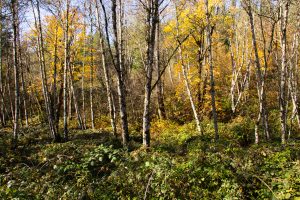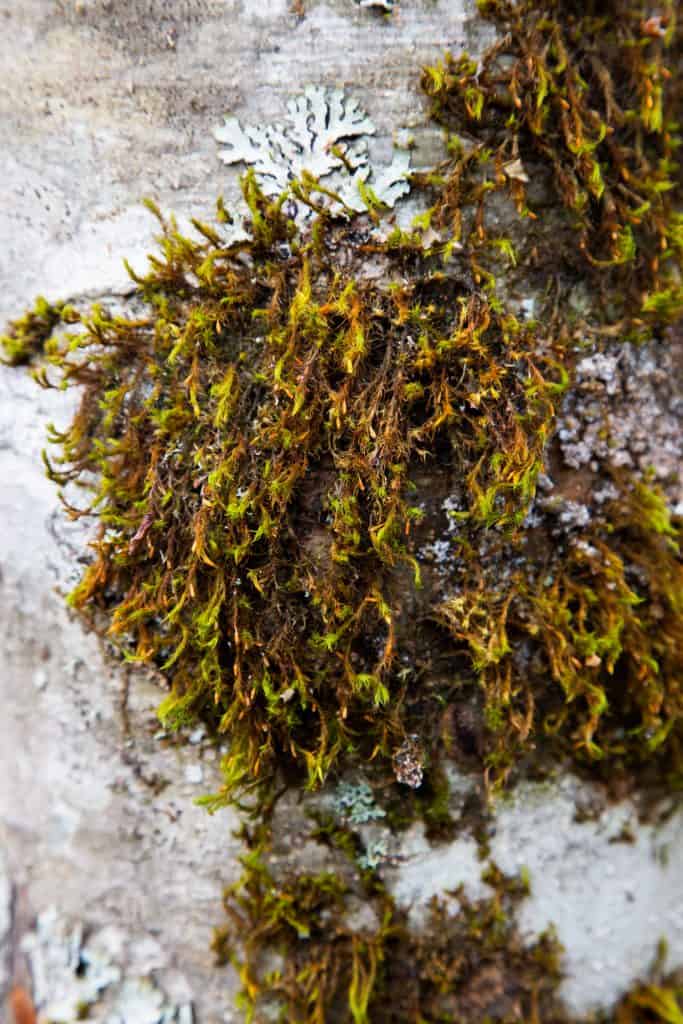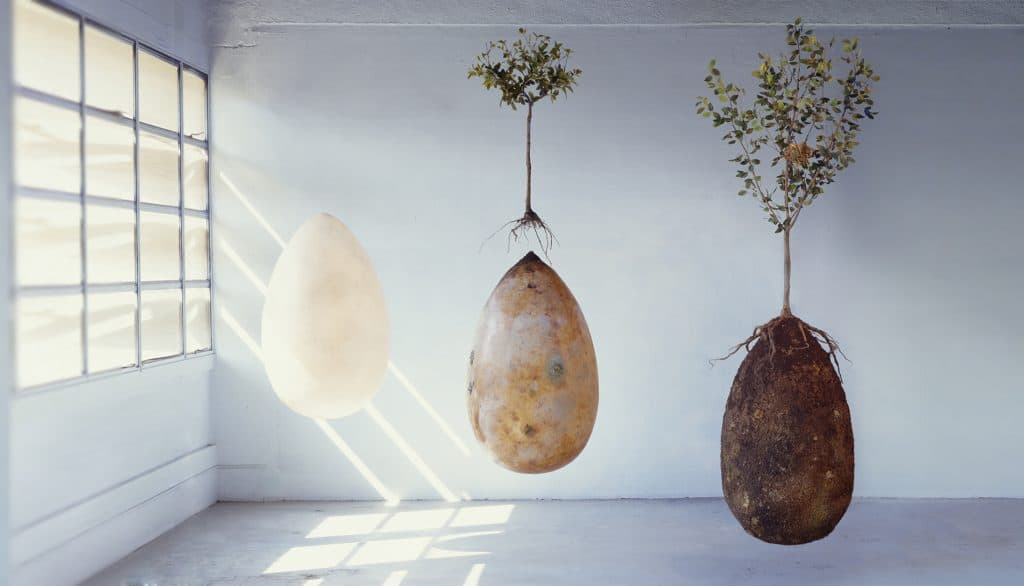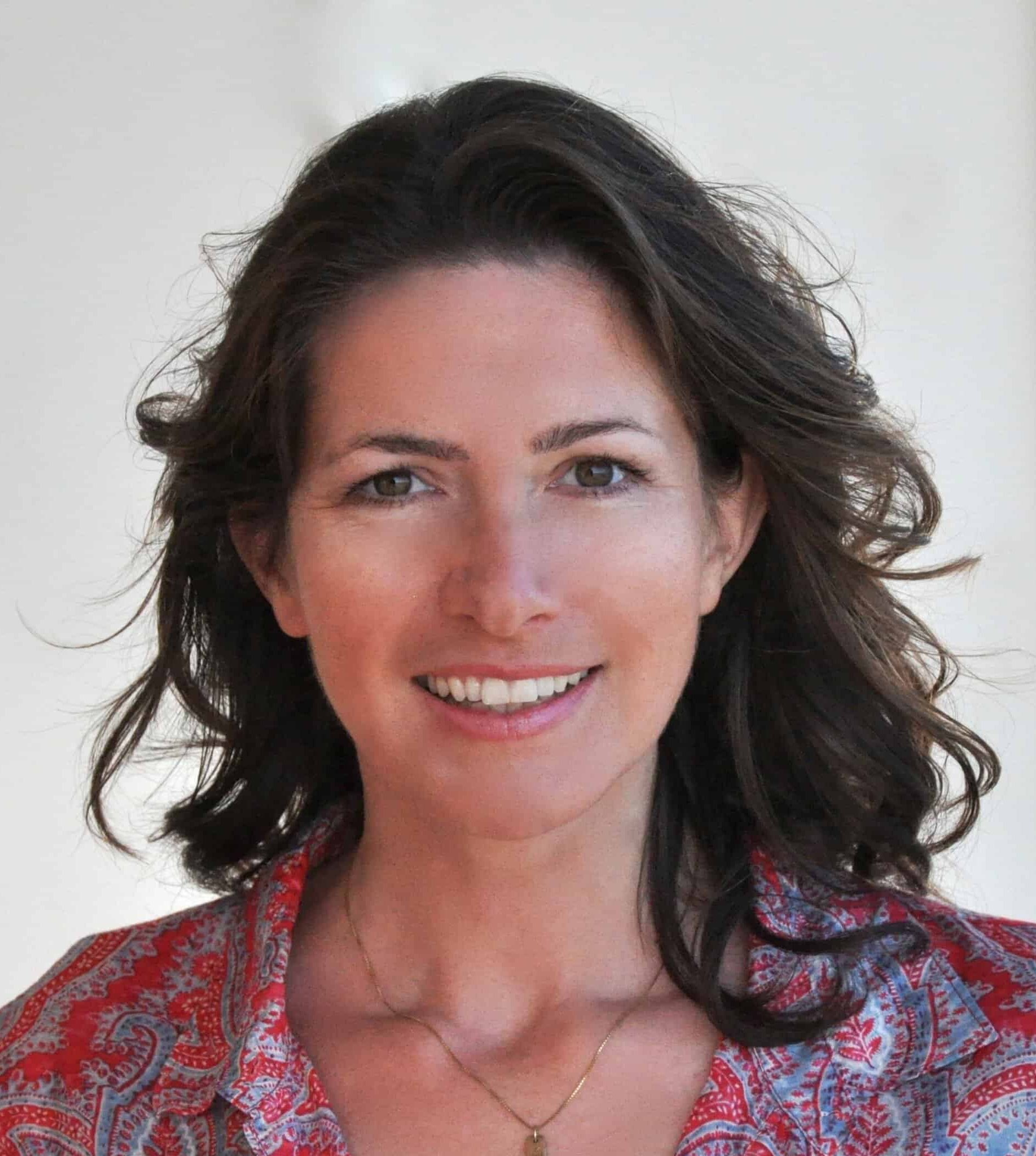The Recompose “Greenhouse” in Kent just south of Seattle, Washington, looks like an unassuming warehouse from the outside and like a futuristic art installation on the inside. “This is like a spaceship, but it’s also like a forest floor,” founder Katrina Spade explains in a video, standing before a shiny, white steel wall containing 16 hexagons. More accurately, the Greenhouse is at the core of what Spade calls “a death care revolution.” It has turned 100 human bodies into compost since January this year.
Due to Covid, the Greenhouse is not open to the public, but in that same video — part of her popular “Ask a Mortician” series — bestselling author Caitlin Doughty volunteers to take the place of a corpse. Demonstrating what funeral preparations look like, Spade places an organic cotton shroud over Doughty’s body, then sprinkles straw, alfalfa and wood chips over the top. If this wasn’t a demonstration, the next step would be to load Doughty’s body into an eight-foot cylinder behind a steel flap where microbes would break down her body within a month until there was nothing left but about a cubic yard of soil. “You don’t need to worry about being buried alive,” Spade jokes with Doughty. “You’re pretty cozy, comfortable, you have oxygen to breathe, and if you wake up and knock on the door, I can assure you our staff would open the door real quick.”
It’s not difficult to compost a human body. The microbes naturally found on the skin, in the body and on the carbon-rich plant material are enough to kickstart the process, generating enough heat in the cylinder without an additional heat source — around 140 degrees or higher — to accelerate the rate of decomposition, just like compost in your yard develops its own warmth. Sensors monitor each cylinder as it slowly rotates to ensure a constant flow of oxygen circulates around the entire body. The natural heat kills viruses and other pathogens. In the end, even the bones break down, and only foreign elements such as hip implants get removed once the process is complete, after the compost spends a month drying in the “curing bin.”
Both Spade and Doughty consider themselves to be members of the Death Positive movement, which sees openness about death as a cornerstone of a healthy society. Spade is the director of America’s first legal human composting facility, and Doughty is a mortician and founder of “The Order of the Good Death” in Los Angeles, “a group of funeral industry professionals, academics and artists exploring ways to prepare a death-phobic culture for their inevitable mortality.”
Both represent threats to the $20 billion funeral industry, which makes returning the dead to the earth a surprisingly toxic and expensive affair. In most Western societies, the two most common options are burial or cremation. Conventional burial involves injecting a body with formaldehyde and then placing it in a heavy-duty casket or a concrete tomb; cremation burns fossil fuels and releases carbon dioxide. But maybe even more important than creating a greener option for the end of life, Spade is eager to strengthen “our connection with the natural cycle of life.”

“It’s like we’ve created, accepted and death-denied our way into a status quo that puts as much distance between ourselves and nature as is humanly possible,” she shares in her TED talk. “Our modern funerary practices are designed to stave off the natural processes that happen to a body after death. In other words, they’re meant to prevent us from decomposing.”
Judging by all the skeletons and spiderweb-strewn tombstones adorning people’s homes this weekend, one might think we’re quite comfortable contemplating death. But two-thirds of Americans don’t have written wills. And except for those who work in health care, law enforcement, or the funeral industry, most people rarely see or encounter death, despite the fact that it occurs all around us, daily, and eventually, to everyone. “Americans put Halloween decorations everywhere,” says former TV producer Amy Pickard who encourages people to think about making end-of-life preparations with her initiative Good to Go!, “but we don’t want to think about our own mortality.”
Crushed by negative news?
Sign up for the Reasons to be Cheerful newsletter.Pacing the stage, Spade is a warm, witty presence with glacier blue eyes and short, brown hair. She tells the audience she grew up “in a medical family where it was fairly normal to talk about death and dying at the dinner table.” But instead of going into medicine, she studied sustainable agriculture, design and architecture. While watching her two toddlers, she began to wonder what would happen to her physical body after she died. “What would my nearest and dearest do with me?”
She wrote her thesis on decomposing human bodies in crowded urban areas. “In U.S. cemeteries, we bury enough metal to build a Golden Gate Bridge, enough wood to build 1,800 single-family homes, and enough formaldehyde-laden embalming fluid to fill eight Olympic-size swimming pools,” she sums up her research. Simply burying the body in an organic shroud or biodegradable container and letting it decompose naturally is the greenest burial. It’s what many cultures have done with their dead for thousands of years. But land is at a premium, and natural burial sites are few and far between. “In some places, you can’t buy a plot no matter how much money you have,” Spade says.
More than half of Americans now choose cremation, not least because it is readily available, cheaper and perceived as environmentally friendly. “I used to think that cremation was a sustainable form of disposition,” Spade reveals to her audience. But she learned that “cremations in the U.S. emit a staggering 600 million pounds of carbon dioxide into the atmosphere annually. The truly awful truth is that the very last thing that most of us will do on this earth is poison it.”

As Spade was contemplating alternative ways to spend eternity, a friend mentioned to her that farmers have been composting livestock for decades. “A light bulb went off,” she says.
Last year, Washington became the first U.S. state to allow human composting. Oregon and Colorado soon followed suit. Other states, such as California and Hawaii, were discussing similar bills but postponed their decisions due to protests from the Catholic Church and funeral directors. The Catholic Church Conference insists that “natural organic reduction” (NOR) — the official term — is disrespectful. (They also oppose the scattering of ashes.) And funeral directors fear financial loss if Spade succeeds in scaling her method to become, as she puts it, “the default choice for death care.”
The alt-death and green burial movement is gaining traction in other countries, too. In Italy, for instance, designers Anna Citelli and Raoul Bretzel created egg-shaped biodegradable burial pods that will hold a deceased body in the fetal position and provide nutrients for a tree to grow above it. However, legal restrictions in Europe only allow them to produce bio-urns for ashes so far, not for human bodies.
In Seattle, Anna Swenson, the outreach manager at Recompose, describes the smell in the “Greenhouse” simply as earthy like a yard. This is only partly due to elaborate filtration. Just like a well-managed compost heap in your yard doesn’t have much of a smell, neither does a well-managed composting human body. “The truth is that nature is really, really good at death,” Spade insists. “We’ve all seen it. When organic material dies in nature, microbes and bacteria break it down into nutrient-rich soil, completing the life cycle. In nature, death creates life.”
Swenson shares that clients include an unusually large number of medical professionals, artists and people who love the outdoors, such as farmer Amigo Bob Cantisano, a pioneer of organic agriculture and a life-long nemesis of the “pesticide mafia.” Cantisano interviewed Spade before his cancer death himself to make sure she knew how good composting works, and she passed the test.
The demand appears enormous. Since opening the Greenhouse in December 2020, the vessels have been almost constantly occupied. The pandemic forced Spade to postpone her original vision of a larger, sun-filled facility, where families could participate lovingly in laying their loved ones to compost. But Recompose is planning to open a bigger facility with 50 vessels near Seattle and another one in Colorado next year. For the price of $5,500, which includes transport from nearby counties, decomposition is cheaper than the average casket burial, pricier than cremation and, according to Swenson, saves about a metric ton of CO2 per person, roughly the equivalent of 40 propane tanks.

The resulting material can be used like any other compost in gardens or parks once it has been tested for substances like coliform bacteria, lead and mercury. Lynne Carpenter-Boggs, soil scientist at Washington State University, has testified that the soil is “clean, rich, odorless” and has “passed all safety guidelines for pathogens and pollutants.”
Many families take home a small vessel with the earth-like compost, maybe to plant a tree. For farmer families with a lot of land like the Cantisanos, Amigo Bob’s wife Jenifer rented a U-Haul and drove home the entire truckload.
Most families will donate at least parts of the soil to Remember Land, a restoration project on the ancestral homeland of Coast Salish and Chinookan peoples in Southwestern Washington. Eliot Rasenick, director of the non-profit, uses the “soil made of people” to provide nourishment for the conifers on his 700 acres. Spade thought “human compost would be the best compost.” But Carpenter-Boggs set her straight: “It’s good compost, but it’s just compost. There is nothing special about that organic matter just because it’s human.” Maybe Recompose does what most of us fear most: remind us that our bodies are nothing but organic matter in the end.






